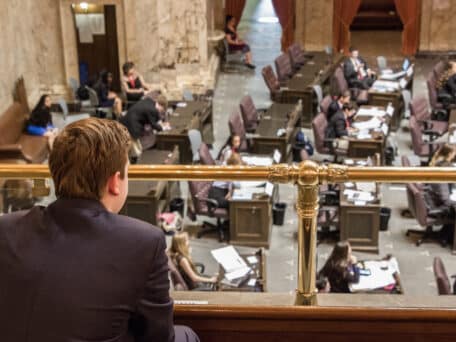The Washington Education Association (WEA) is championing its latest initiative (I-1351) under the guise of smaller class sizes. However, as SHIFT previously reported, I-1351 is not at all about improving education through smaller class sizes. Rather, it is about power and control. The WEA wants to add union members to its ranks — collecting more in dues — and call the shots on state education spending. The union’s underhanded objective is so obvious even a handful of Democrats have even come out against I-1351.
But, you don’t have to take our word for it. Media outlets and organizations across Washington State have warned voters against supporting I-1351. Here is what others are saying about the WEA’s latest power grab:
The Everett Herald,
The initiative goes well beyond what’s required under McCleary. There’s class size reduction already built into the existing definition of basic education. I-1351 would add more than $2 billion to the funding challenge. Hoping to gain constitutional protection for its staffing requirements, initiative backers specified that the provisions are “to be considered basic education funding … in accordance with the McCleary decision.”
If adopted, the measure would require hiring 12,000 teachers, plus a legion of administrators, librarians, nurses, social workers, psychologists, custodians, “parent involvement coordinators” and, well, you get the idea.
It’s a lot of money, a lot of new positions, and — not incidentally — a lot of new union members. It’s also a lot of statutory rigidity. For a group that rails about the prescriptive nature of standardized testing and rigid accountability standards, the union would happily impose a fiscal straitjacket on local school districts, micromanaging staffing and compensation policies.
The Seattle Times,
Initiative 1351 offers a different answer: the union’s. Its vision is all about money, and it would lock the state into a hiring spree that would be difficult to reverse.
The measure would require the state to hire some 12,000 new teachers — new union members, most likely. With them would come additional counselors, librarians, psychologists and other support staff. By the 2017-2019 budget period, a legislative estimate suggests it would cost state government $3.4 billion and local school districts even more…
Washington has been placed in this spot before, by Initiative 728 in 2000 — another union-backed initiative to reduce class sizes without a funding source. It proved impossible to fund during the last recession and ultimately was repealed.
But this initiative certainly is trickier. By piggybacking on McCleary, it seems to finish the job of boxing in the Legislature that the court began. Maybe further class-size reductions are worth thinking about, in balance with everything else. That’s a job for lawmakers.
The deciding factor should be what’s right for kids, not for the union.
The Washington Policy Center’s key findings from “Citizens’ Guide to Initiative 1351: To reduce class sizes.”
- Seventy-one percent of new staff hired under I-1351 would not be classroom teachers.
- The WEA union would profit by $7.4 million a year under I-1351.
- I-1351 would let school districts increase local property taxes by $1.9 billion through 2019.
- State and local spending under I-1351 would increase by up to $6.6 billion.
- I-1351 provides no funding. Education money diverted to it would make it harder to pay good teachers more.
- Diverting money to I-1351 would make it harder to fund the McCleary decision.
- I-1351’s one-size-fits-all requirement would make it harder for teachers to use new technologies.
- I-1351’s narrow focus on class size is unlikely to improve the quality of education in Washington’s public schools.
Smarter Government Washington,
By the time it is fully implemented, I-1351 is estimated to require about $3.4 billion per two-year budget cycle. The cost of meeting its new mandates through 2019 is $4.7 billion, at a time when legislators are already grappling with how to pay for the rapid rise in K-12 spending under the McCleary decision and other budget increases for social services caseload growth…
To put I-1351’s price tag in perspective, the current 2-year state general fund budget spends $33.57 billion, of which $15.3 billion is spent on K-12 schools. The extra $3.4 billion that I-1351 would require is more than the $2.9 billion allocated for all of the state’s universities and community colleges put together. Smaller class sizes are appealing, but are they the best use of $3.4 billion?
Legislators face a difficult enough task in reaching agreement on how to fully fund our schools under McCleary. I-1351 will greatly – and cynically – complicate that task. Its authors aren’t trying to be helpful in the statewide education funding debate, they’re trying muddy it.




